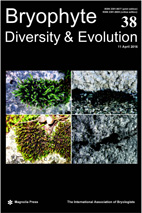Abstract
Moss diversity in southern Africa is greatest in the Cape Fold Mountains of the southwestern Cape, and the Drakensberg mountains along the Great Escarpment of KwaZulu-Natal, Mpumalanga and Limpopo Provinces of South Africa. Five main, and five secondary centres of moss diversity are described, based on the number of moss species per half degree grid square in southern Africa (South Africa, Namibia, Botswana, Lesotho and Swaziland). The main centres are the Southwestern Cape, Outeniqua, Amathole, KwaZulu-Natal and Mpumalanga Centres of Moss Diversity. The KwaZulu-Natal centre is divided into the Drakensberg and Midlands Subcentres of Moss Diversity and the Mpumalanga centre into the Wolkberg and Blyde Subcentres of Moss Diversity. The secondary centres are the Cederberg, Witteberge, Pondoland, Magaliesberg and Soutpansberg Centres of Moss Diversity. Although collecting bias is responsible for concentrations of species records in many areas, moss diversity is strongly influenced by habitat heterogeneity and mean annual rainfall. This is in agreement with existing hypotheses of a broad-scale correlation between environmental heterogeneity and climate on the one side, and vascular plant diversity and distributions on the other.

